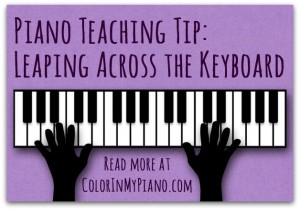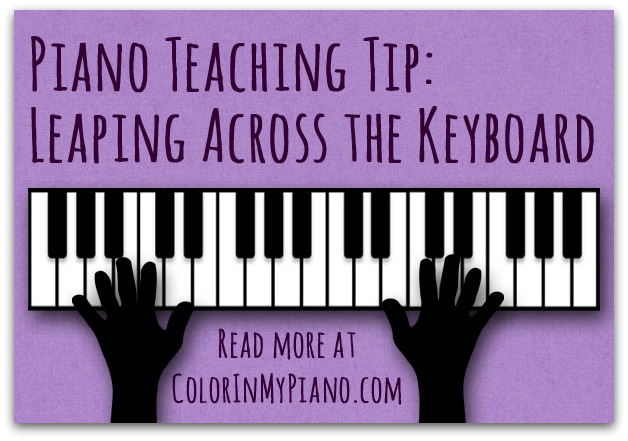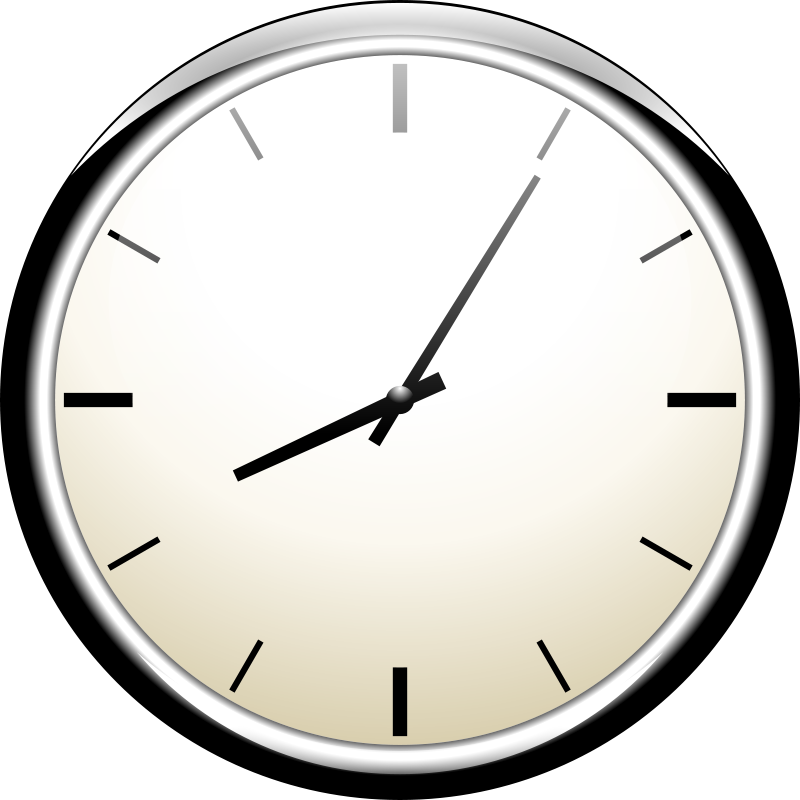 Even from the beginning, the pieces in most modern piano method books require the student to move around the keyboard quite a bit. Older piano methods (at least, the ones that utilize the Middle C reading approach) require the student to stay around the middle of the piano during the entire first level, or even further in some cases. I’m glad modern methods require the student to move around the keyboard, because this because it helps student become familiar and comfortable with the whole keyboard from day one instead of inadvertently teaching the student that anything away from the middle of the piano is “hard.”
Even from the beginning, the pieces in most modern piano method books require the student to move around the keyboard quite a bit. Older piano methods (at least, the ones that utilize the Middle C reading approach) require the student to stay around the middle of the piano during the entire first level, or even further in some cases. I’m glad modern methods require the student to move around the keyboard, because this because it helps student become familiar and comfortable with the whole keyboard from day one instead of inadvertently teaching the student that anything away from the middle of the piano is “hard.”
I’ve had parents notice and comment on this difference between older and newer methods. They are surprised when their student needs to use the whole keyboard at their first lesson, because when they took lessons as a child, they remember playing around Middle C and never venturing to the extreme ends of the keyboard.
As an example: The first four pieces in the Primer Level of the Faber Lesson Book require the student to play a simple pattern on the black key group of 2 or 3, and then to repeat the pattern twice, moving up an octave each time. Other pieces throughout the series require students to play notes up or down an octave, especially at the end of the piece. Other method books take a similar approach.
Often, to the student, making those leaps across the piano is the most challenging aspect of a piece. They sometimes need to stop to think about where their hand needs to go. Even if they know where their hand needs to go, they still might take some extra time searching the keyboard with their fingers to put the correct finger on the correct key. This, of course, disrupts the rhythm of the piece.
How can we help students solve this problem? Continue reading “Teaching Tip: Leaping Across on the Keyboard”




 When I was a 5-year-old beginner piano student, I remember being re-assigned one-/two-line method book pieces when the only thing lacking was dynamic contrast. And I remember being frustrated with this. My frustration was partly due to the fact that I was bored with the music I was playing; I wanted to be reading staff notation instead of pre-staff notation, as my mother taught me to do before she found me a piano teacher. Regardless, having to re-practice pieces that were already mastered, due to forgetting to drop from forte-piano to piano in one place was a hard thing for me to swallow.
When I was a 5-year-old beginner piano student, I remember being re-assigned one-/two-line method book pieces when the only thing lacking was dynamic contrast. And I remember being frustrated with this. My frustration was partly due to the fact that I was bored with the music I was playing; I wanted to be reading staff notation instead of pre-staff notation, as my mother taught me to do before she found me a piano teacher. Regardless, having to re-practice pieces that were already mastered, due to forgetting to drop from forte-piano to piano in one place was a hard thing for me to swallow.
 Here is a phrase I find myself use more and more lately with my students:
Here is a phrase I find myself use more and more lately with my students:
 Here’s another session given by the well-loved pedagogue Marvin Blickenstaff from the 2011 OhioMTA Conference:
Here’s another session given by the well-loved pedagogue Marvin Blickenstaff from the 2011 OhioMTA Conference: